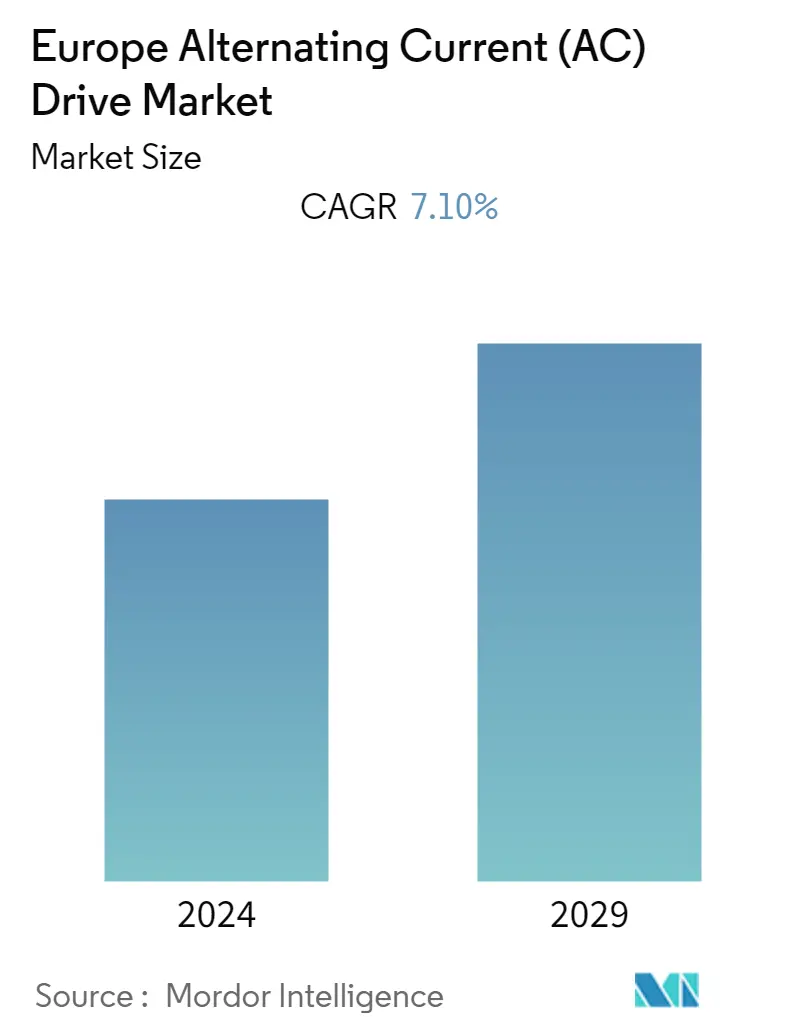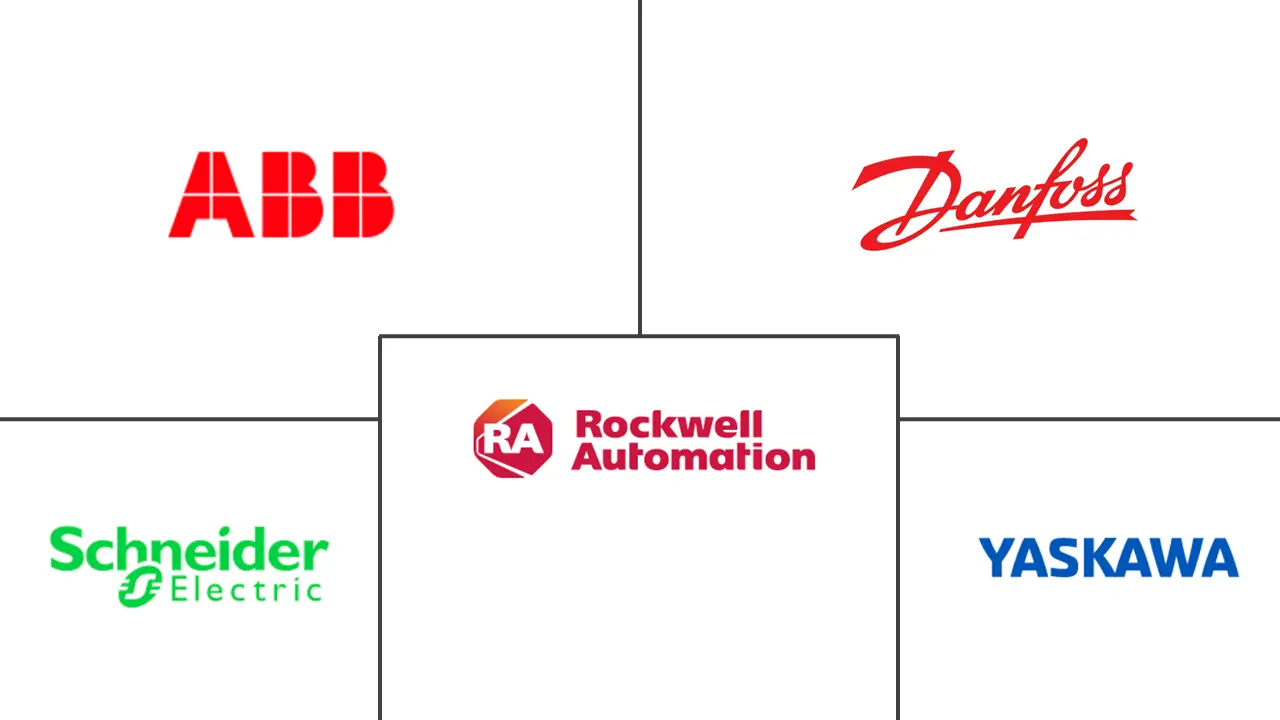Market Size of Europe Alternating Current (AC) Drive Industry

| Study Period | 2019 - 2029 |
| Base Year For Estimation | 2023 |
| Forecast Data Period | 2024 - 2029 |
| Historical Data Period | 2019 - 2022 |
| CAGR | 7.10 % |
| Market Concentration | Low |
Major Players
*Disclaimer: Major Players sorted in no particular order |
Need a report that reflects how COVID-19 has impacted this market and its growth?
Europe Alternating Current (AC) Drive Market Analysis
The Europe Alternating Current (AC) Drive Market is expected to register a CAGR of 7.1% over the forecast period 2022 to 2027. According to the European Commission, the Ecodesign requirements should harmonize the energy efficiency requirements for the Alternating Current (AC) drives throughout the Union, therefore contributing to the smooth operation of the internal market and helping to improve the product's environmental performance.
- AC drive is an electronic device that can adjust the rotation speed of an electric motor according to the application's needs, which can result in considerable energy savings. For example, the new ecodesign measures by Europe will now regulate the efficiency of these drives.
- According to Danfoss, the investment in an AC drive is higher than in an energy-efficient motor. In the industrial sector, where electric motors account for 30% of global final energy use, it requires significant investment to install AC drives or upgrade motor efficiency classes to optimize existing motors for energy efficiency.
- According to Invertek Drives, nearly 50 percent of the electricity produced in Europe is consumed by around eight billion electric motors. Forty percent of electricity is used to power the industry, with two-thirds of this used by electric motors globally, and yet less than 20 percent of electric motors are controlled by variable frequency drives (AC Drives). AC drives have a role on both the demand and supply sides of the equation. These drives primarily act to reduce electricity consumption drawn by motors under torque loading.
- Besides, increased usage of AC drives in relevant applications, such as a pump delivering a water flow that changes with time, can generate considerable savings at the application level. This is followed by the regulation requiring manufacturers of motors and drives to provide relevant energy efficiency data at different speed/torque points. However, the advantage is often considerably higher, so after the initial payback time, the AC drive is the most economical means to generate energy efficiency.
- The European Government has already identified motors and variable speed control of motors using AC drives as huge opportunities for energy-saving. Currently, 25% of the motors are equipped with these drives, and the additional potential to install other drives is 40-50% of the motors. The International Energy Agency (IEA) and the European Government have set ambitious targets for energy savings and regard cutting back consumption as a vital first step in achieving the targets, following the principles of the Efficiency First concept.
- The COVID crisis directly impacts energy use and greenhouse gas (GHG) emissions at both global and regional levels. The Covid-19 Pandemic unveiled weaknesses, as the AC Drives market was initially unable to cope with shortages in supplies caused by closed borders and manufacturing sites. The crisis accentuated the strategic importance of value chains such as automation, motors, and drives in light of the accelerating digital transformation and growing demand for Alternating Current (AC) Drives.

